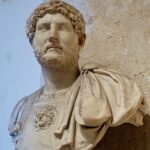Chapters
Many legal systems in the world today, such as the French legal system, are based on Roman law. Law and order were essential to the governance of the Roman Empire; there were many laws and many ways to interpret them. They were all unified by Emperor Hadrian in the 2nd century CE. A significant reform of the law was carried out by Emperor Justinian (reigned 527-565). His law is known as the Justinian Code. It became the basis of Western European law.
Process
In Rome, court trials were held in basilicas, the largest and most magnificent buildings in the forum. Just like today, the defendants were questioned by judges. In more serious cases, the court could consist of up to 75 citizens, and not twelve, as in the USA.
The accused could pay a lawyer to defend him. Good lawyers were highly respected and sought after. One of the most famous lawyers in ancient Rome was Cicero (106-43 BC). Everyone spoke, and then the judges voted on whether the defendant was guilty or not guilty. The judge then announced the verdict and set the amount of the penalty.
Plebs and patricians
Roman society was divided into citizens, who could vote in elections and serve in the army, and slaves, who had no rights. Citizens were divided into three classes: patricians, equites and plebeians. Patricians were a wealthy aristocracy and held the highest political and judicial offices. The equites were wealthy business people. Plebeians were ordinary citizens.







